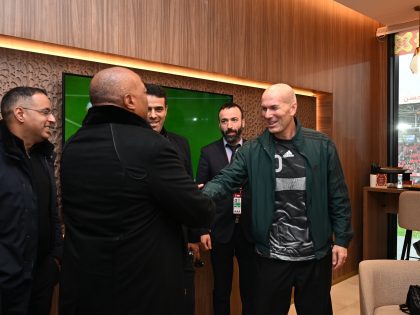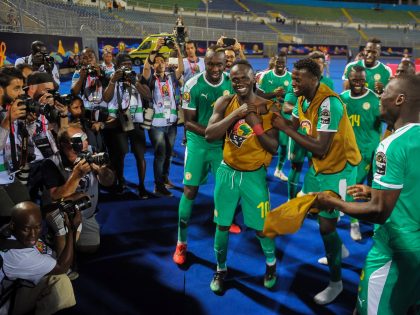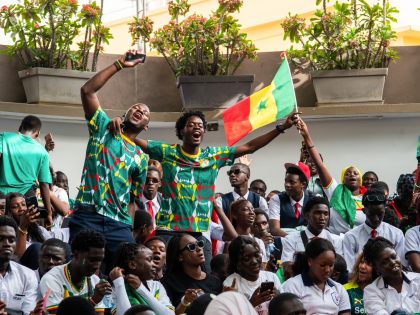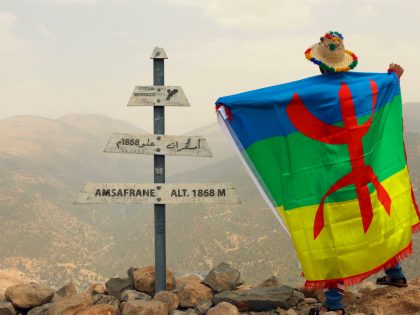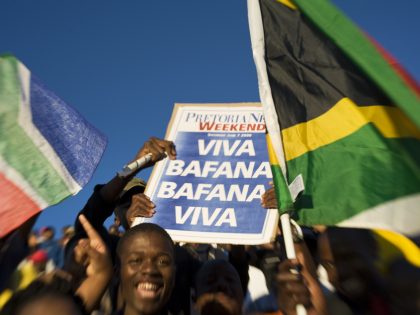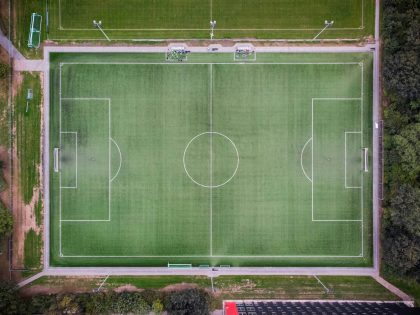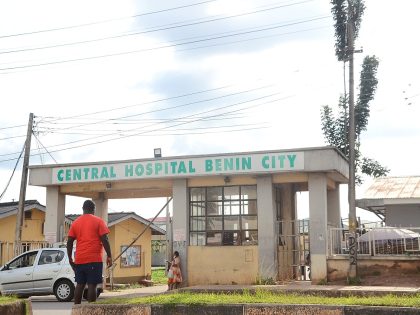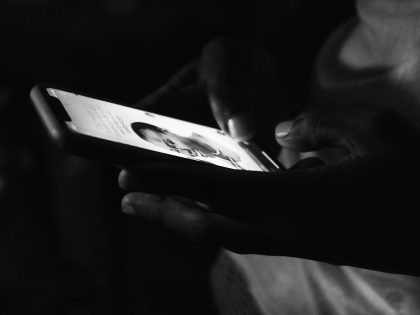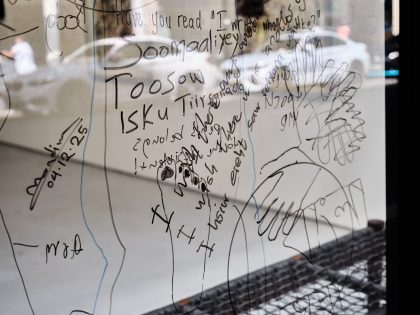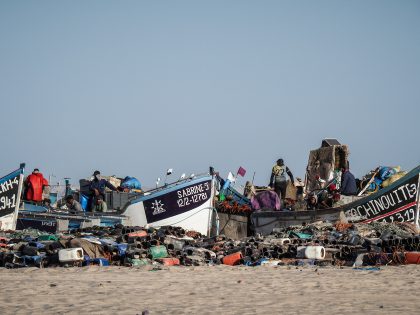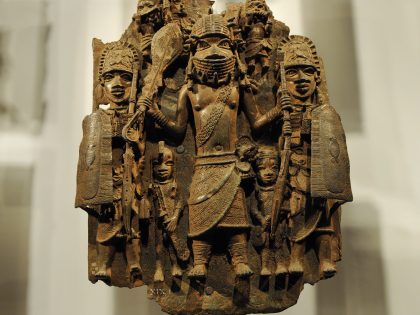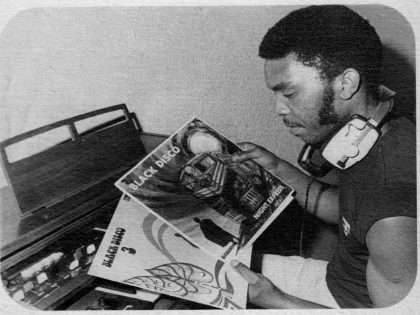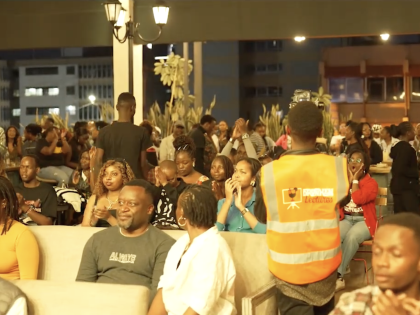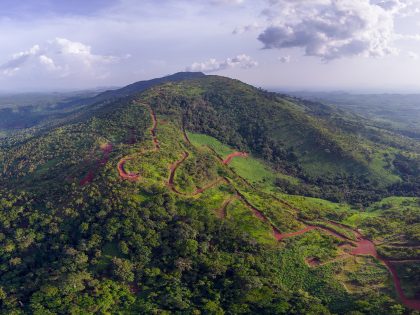The legacy of the first genocide of the 20th century
The mass murder of Nama and Herero by German colonists is now the subject of a documentary by the South African director, Vincent Moloi.

Still from "Skulls of my people"
The first genocide of the 20th century took place between 1904 and 1908 when a German force exterminated round 100 000 Ovaherero and Nama people in present-day Namibia, then the German colony of South-West Africa. That mass murder is now the subject of a new documentary, Skulls of My People, by the South African director, Vincent Moloi. The film focuses on the efforts of members of the Herero and Nama communities as they demand that their representatives be included in current negotiations with the German government over reparations as well as an official apology for General Lothar von Trotha’s extermination order.
Moloi’s film isn’t just moving but deeply intelligent, and politically aware. The film opens with a frame within a frame. This technique reveals specific story elements on screen but also visually expresses the claustrophobic and unsettling tone of the film. It’s a window into the past. One that is often haunting (thanks to a subtle but moving score), refreshing and effective. The camera at times hovers in the sky, at a distance, capturing the vastness of Namibia. It isn’t just an aesthetic choice but it affects the way you think, feel and make sense of this horrific legacy seemingly far removed from the comfort of our armchairs. It proves an effective way to photograph what is one of the driest places in the world. It forces us, as we stare at an endless expanse of desert to consider what it must have been like a hundred years ago for the Herero and Nama who died here fleeing German forces. Throughout there is a tension between veracity and emotion, between the patterns of everyday life and the sense of a larger history. Aside from historical urgency, the court case and the ongoing negotiations, Moloi’s deeply timely Skulls adds weight to the case against the German government.

The film, which had its world premiere at the top international documentary festival IDFA in The Netherlands at the start of 2017, drives home the cruelty and double-standardness with which Germany continues to treat its former colony. At it’s heart is Utjiua Ester Muijiyangue, chairperson of the Herero Genocide Foundation, who we spend the most time with. We see her dressing in her home. She tells us how Herero value cattle and how the dress she wears is styled in ways that resemble the animal that plays such an important role in their culture. It is during such intimate moments that the film is strongest. We see how she negotiates the time and space between past and present, and how her stories reduce the conflict to a human scale. “We want the skulls of our people. They belong here in Namibia. They don’t belong there in Germany” she says.
Utjiua tells of a story about a church on a hill where the Germans said people should come and pray.
My people closed their eyes to pray but they never said Amen. The moment they closed their eyes they were all shot in that church. Even when I pray, I don’t close my eyes.
Such are the painful memories brought forth in the film. The shocking accounts include the way German soldiers drove the Herero into the desert and then poisoned the waterholes; threw children in the air and bayoneted them; raped women; forced women to scrape the flesh off their husbands severed heads so that the Germans could take the skulls back to Germany; they cut off men’s penises and sent them back to Germany to be studied; and forced the survivors who didn’t flee to Botswana or South Africa into concentration camps. “Only because of land?” Utjiua asks. Her sentiments speak to the broader regional concerns over land issues. Particularly when what she’s describing has led to a situation where 80% of commercial farms in Namibia are owned by Germans.

The film also displays a couple of post-colonial absurdities. Such as the very prominent German Lutheran church in downtown Windhoek, photographed so as to incorporate Fidel Castro street. Or an interview with Paramount Chief Vekuii Rukoro in the back of a German Mercedes Benz. The Chief figures prominently: “We say we have waited long enough, 111 years is a long period and our patience is running out,” he insists. In a powerful scene Chief Rukoro makes a resistance order in the same spot that Von Trotha performed his famous extermination order.
The film’s passionate insistence on remembrance gives it much moral gravitas. There is still time, perhaps for dialogue but Utjiua’s last words send us a chilling reminder — “it’s a time bomb,” she says. The Herero in Skulls come across as a proud but tired people who if pushed, in the words of Fanon, “ [may] revolt simply because … we can no longer breathe.” Skulls, documents a people whose history has so often been silenced and chronicles the humanity of the Herero and Nama people who continue to take on the mighty and powerful against all odds.
*This review is part of our round up of the films screening at Encounters International Documentary Festival taking place in Cape Town and Johannesburg from 1-11 June. For screening details visit www.encounters.co.za. The film can also be viewed online on Al Jazeera English’s website.

